
Lizards Around Las Vegas, Wildlife Around Las Vegas
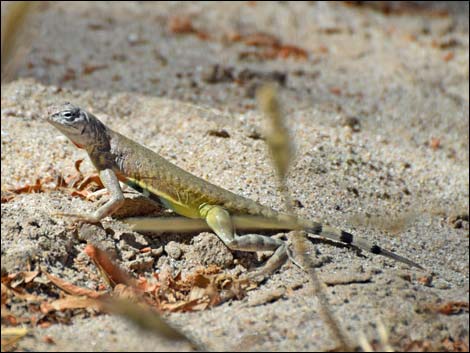 |
General Description: Common Zebra-tailed Lizards (Callisaurus draconoides) are fast, light-colored lizards found in open sandy and open gravel areas such as washes. The tail is black-and-white banded, and the bands fully encircle the tail. Zebra-tailed Lizards often curl their tail up over their back and wave it in the air as if to attract attention. Male Zebra-tailed Lizards have a pair of dark bars on their sides that extend to their bellies. Females may have the dark bars, but if so, they are faint. During breeding season, males acquire a yellow wash overall and blue on the belly. Females acquire a yellow wash on the lower sides and orange spots in the armpit, but they lack blue patches on the belly. Males also develop an orange dewlap. Taxonomy: Phrynosomatid Lizard Family. |
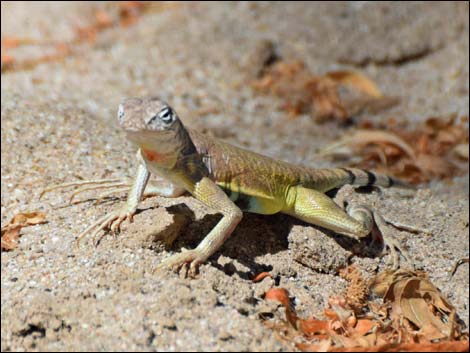 |
Technical Description: Light-colored lizards to about 8 in. (20 cm) total length. The overall color is tan to light brown with two dark bars on the side of body near mid-body. The tail has black bands that completely encircle the tail (compare to earless lizards). The head is wedge-shaped, and the scales are fine and smooth. Zebra-tails have external ear openings present (compare with earless lizards). In breeding season, Zebra-tails get a yellow wash with a bit of orange on the dewlap. Zebra-tails look similar to Earless Lizards (which occur in Arizona). In Zebra-tails, the black bands completely encircle the tail, while in earless lizards, the black bands are on the underside of the trail. Zebra-tails also have external ear openings, which earless lizards do not. |
 |
Diet: Carnivorous, eating mostly insects, spiders (arthropods in general), some plant material, and occasionally other lizards. Habitat: Washes, sandy areas, and open gravel flats with few plants where they can escape predators by digging into the sand and then dating quickly away when necessary. Range: Southern and western Nevada, southeastern California, southern Arizona, and northern Mexico. Look for Zebra-tails at Death Valley NP, Lake Mead NRA and in southern Gold Butte National Monument. Comments: These lizards often curl their tail upward (revealing bold black and white barring) and wave it side-to-side before running. Also holds tail up when running. Curling the tail up may cause predators to attack their tail, which comes off, allowing the lizard to escape. |
 |
If you were a tasty bug or a little fly, this might be the last face you ever see! |
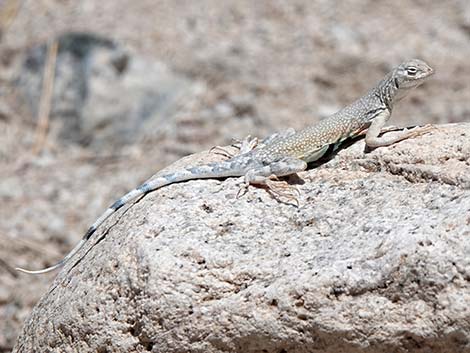 Tail with black-and-white bands |
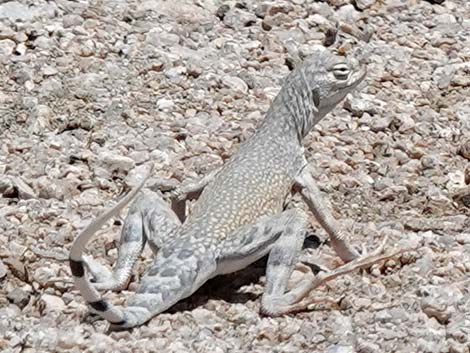 Black-and-white bands extend under tail |
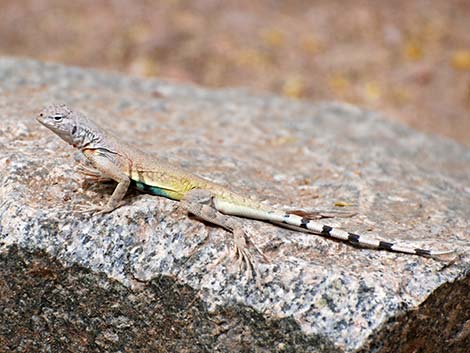 Male in breeding condition |
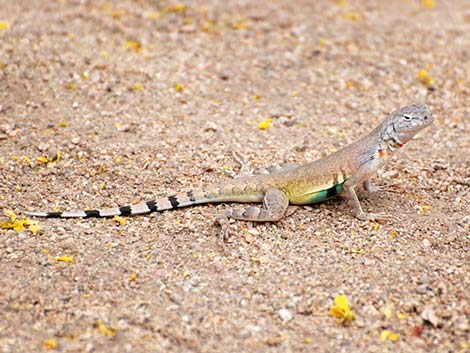 Male in breeding condition |
 Male in breeding condition |
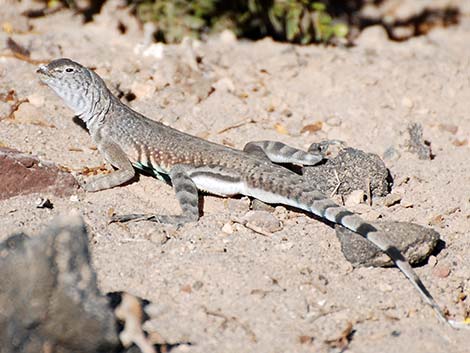 Male in non-breeding condition |
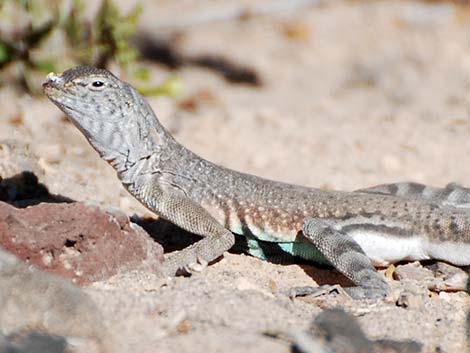 Male in non-breeding condition |
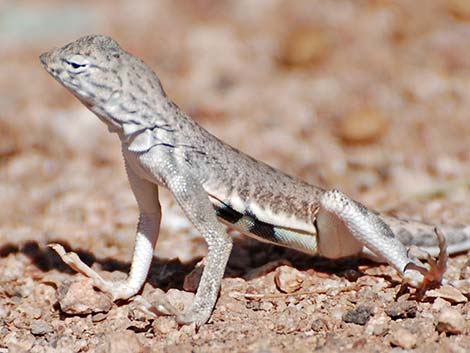 Male in non-breeding condition |
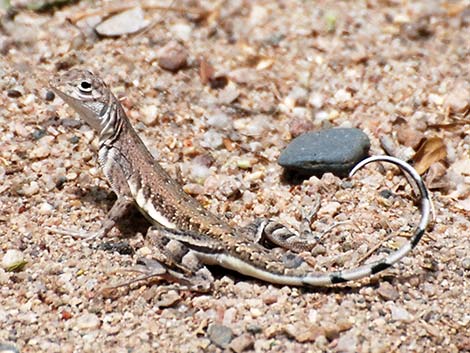 Male in non-breeding condition |
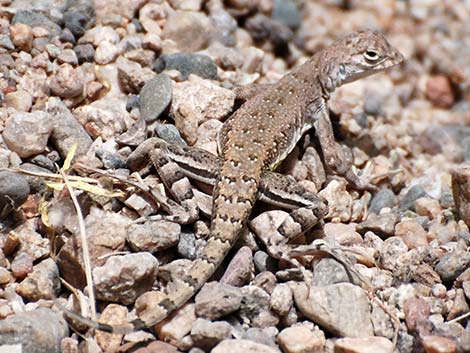 Male in non-breeding condition |
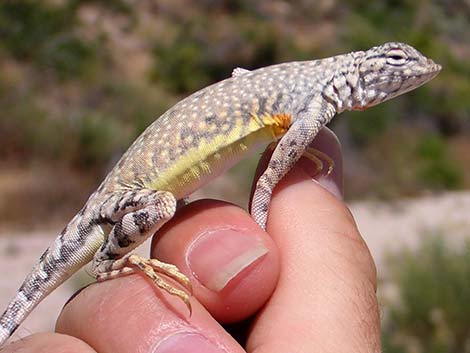 Female in breeding condition |
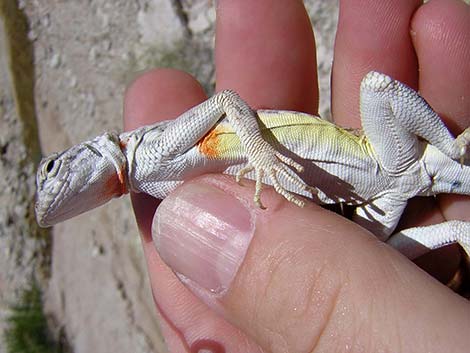 Female in breeding condition |
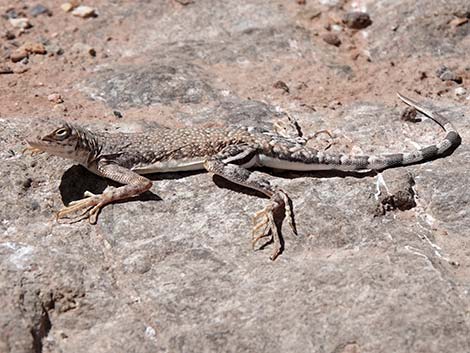 Female: note faint bars on side |
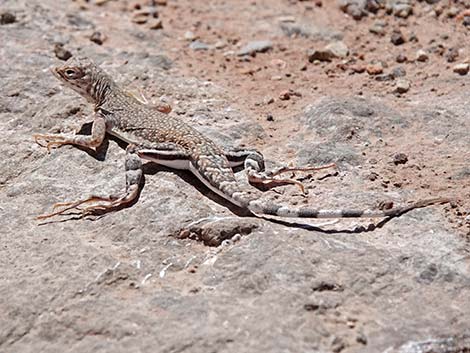 Female in non-breeding condition |
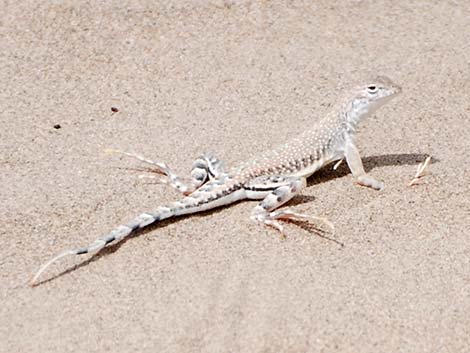 Female in non-breeding condition |
 Female; possibly gravid |
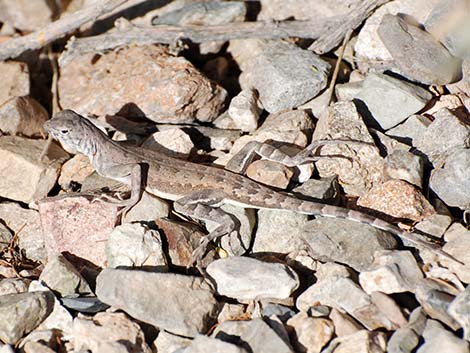 Young Zebra-tailed Lizard |
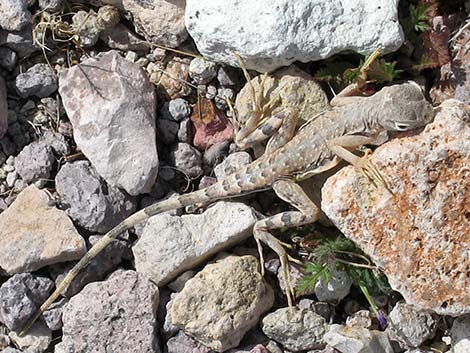 Hatchling Zebra-tailed Lizard |
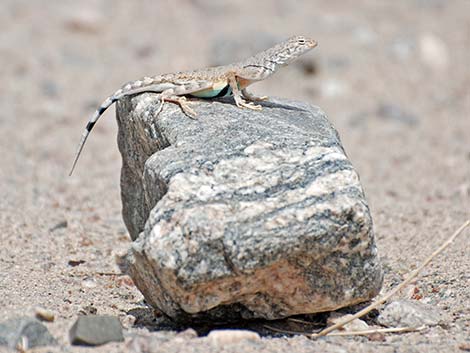 Even sand-loving Zebra-tailed Lizards like a good lookout perch |
 Zebra tail on lookout |
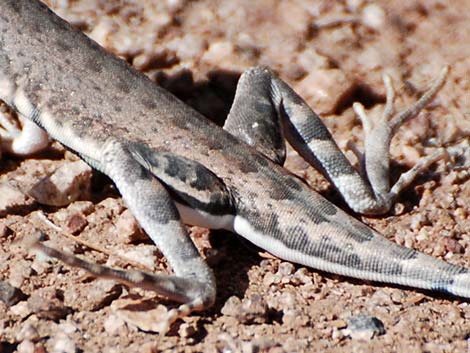 Holding toes off the ground on a hot day |
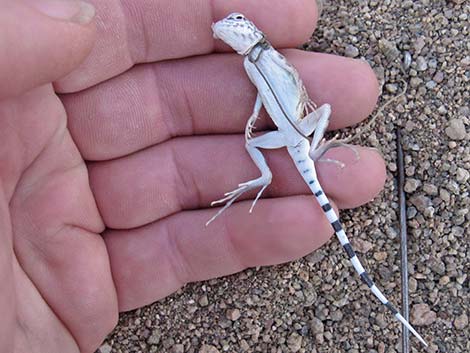 Catching lizards with a noose ensures the tail is not damaged |
Note: All distances, elevations, and other facts are approximate.
![]() ; Last updated 231212
; Last updated 231212
| Lizards Around Las Vegas | Wildlife Around Las Vegas | Glossary | Copyright, Conditions, Disclaimer | Home |